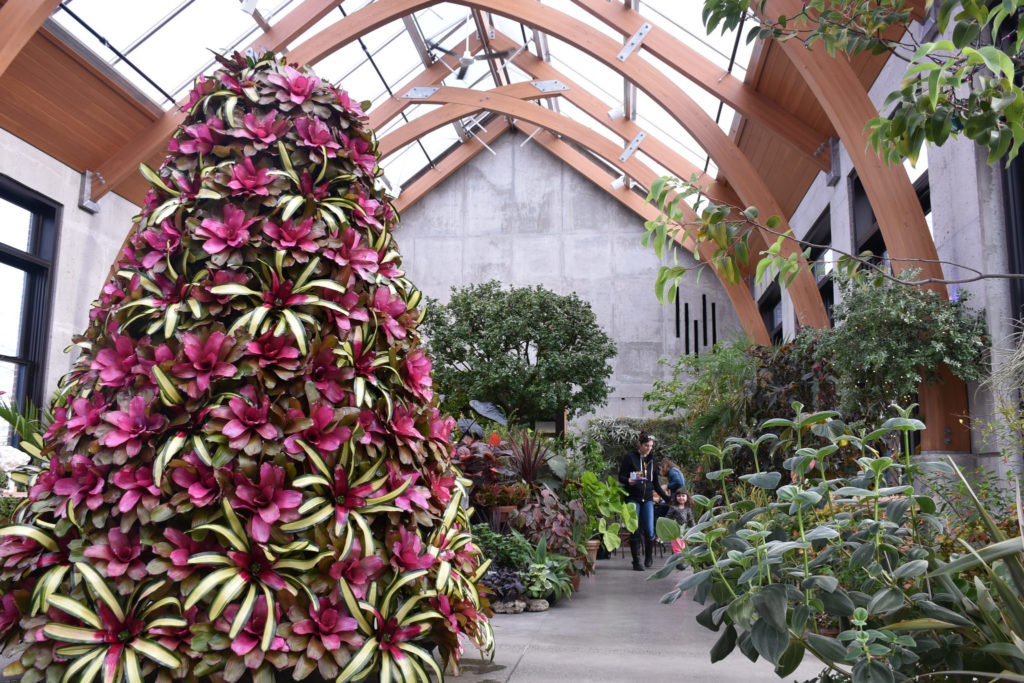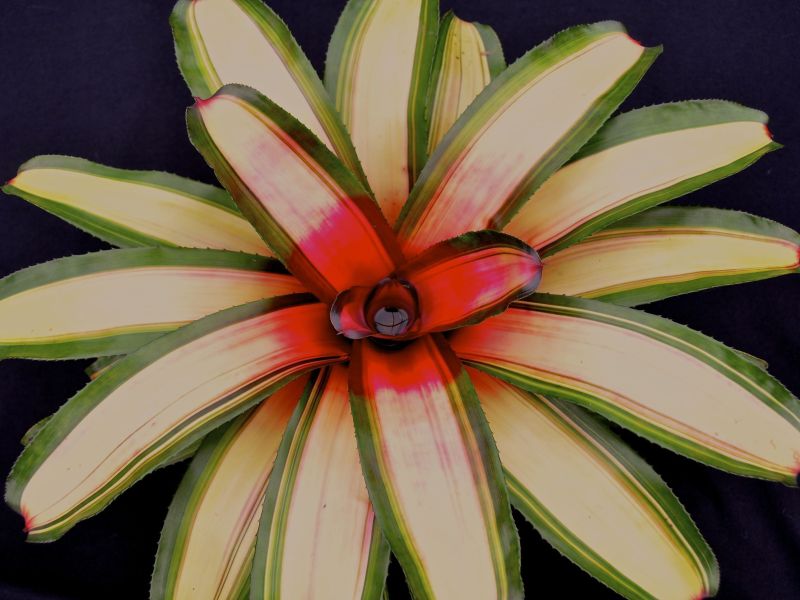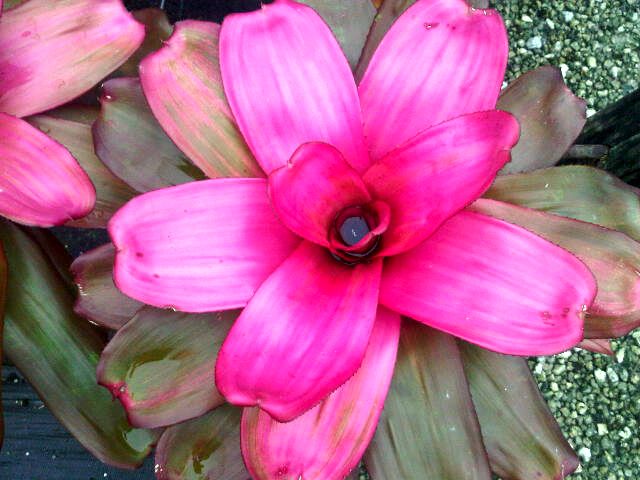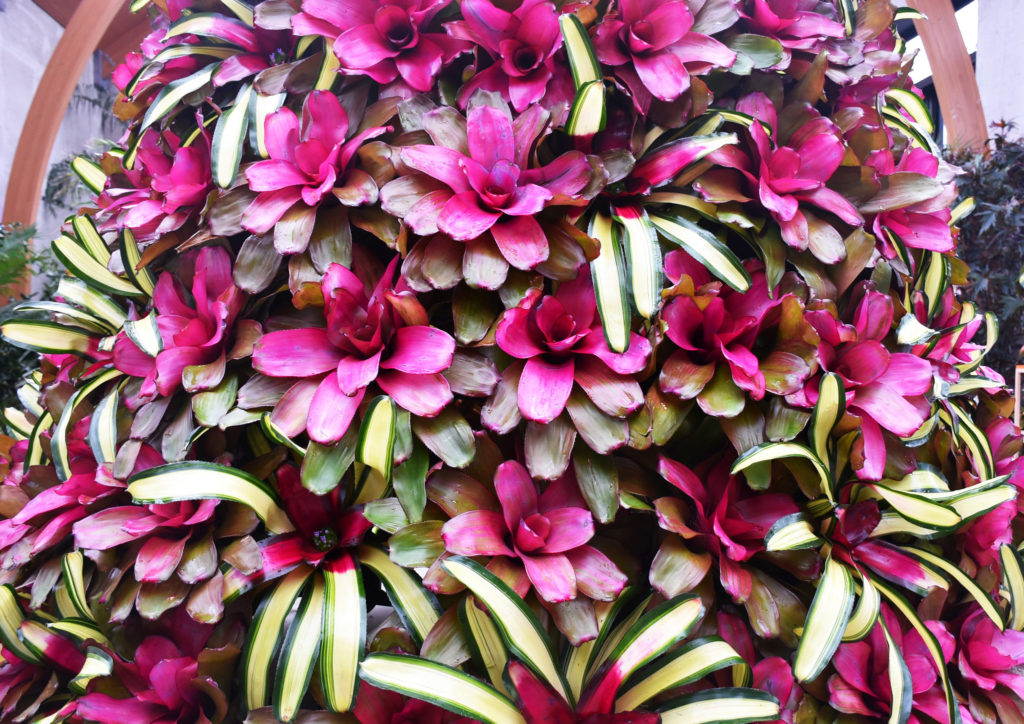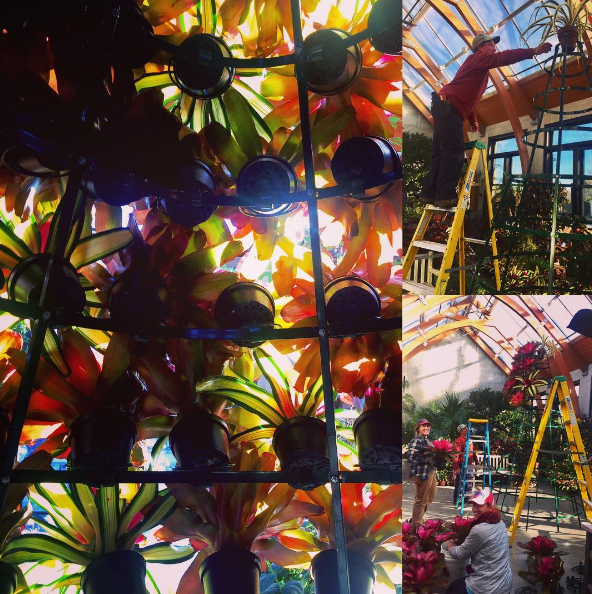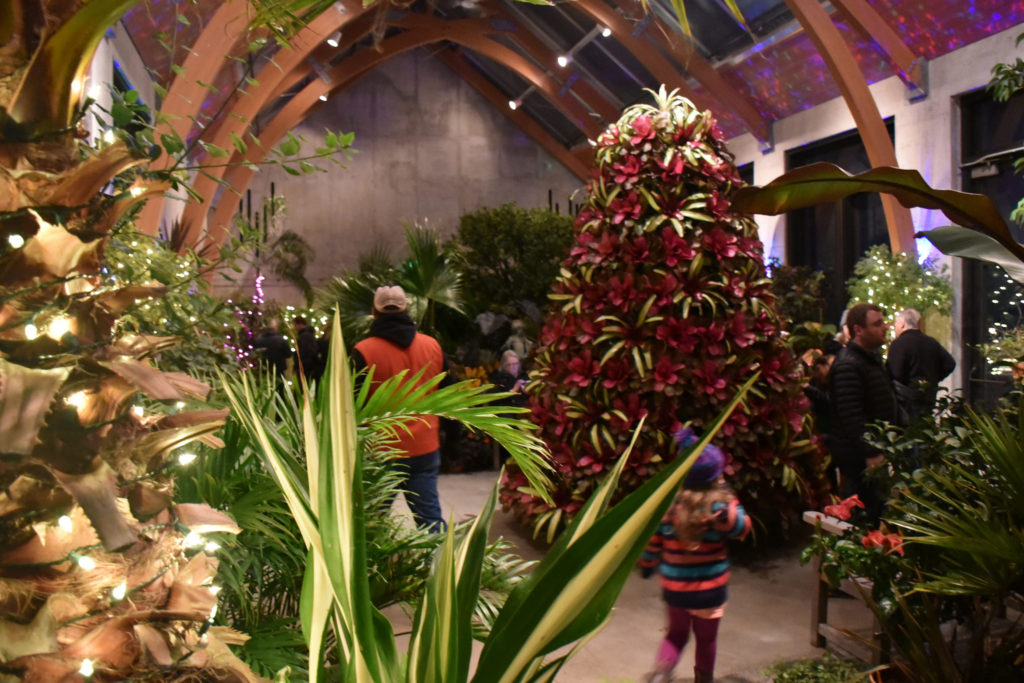We are thrilled to have the Bromeliad Tree back this December for visitors to enjoy.
Bromeliads are a group of plants in the family Bromeliaceae. This family contains approximately 56 genera, over 2,700 species, and thousands of cultivars.
The species are native to tropical and subtropical regions of the world – with the most species occurring in Brazil. They are found throughout Chile, Argentina, the Caribbean, and as far north as Virginia. Pineapple and Spanish Moss are familiar members of the Bromeliad family. They can be found in a wide variety of habitats from hot, dry deserts to moist rain forests to cool mountainous regions.
The tree-like display in our Limonaia conservatory contains 188 plants from the genus Neoregelia. The two cultivars on display, ‘Seduction’ (above right) and ‘Mendoza’ (above left) were selected for their contrasting leaf color and form. Note the tiny flowers at the center of some of the plants!
Most bromeliads are pest and disease resistant, tolerate cool temperatures, and take very little effort to maintain as houseplants – in fact many species are epiphytic without roots, often called “air plants.” The Neoregelias in the Limonaia are terrestrial – meaning they have roots in pockets of soil which provide anchorage as well as some nutrient uptake.
The overlapping leaves form a cup at the center of the plants which holds water and is an important source of both water and nutrients. The colorful foliage provides a showier display than the flowers which are generally held within or just above the cup. The parent plant typically flowers only once and produces offsets, or pups, after flowering. These pups eventually take the place of the parent plant as it declines and dies.
Bromeliads perform best with:
- Bright diffused light
- Well drained soil which is kept moist but not soggy
- Water in the cup formed by the leaves which is periodically refreshed
- Dilute fertilizer during active growth.
So go ahead and try one in your home and you’ll have reason to think of New England Botanic Garden at Tower Hill – and feel a bit festive – each time you see it!

